Google Pixel 7 vs. iPhone 14: Which should you buy?
The entry-level options for Google and Apple.
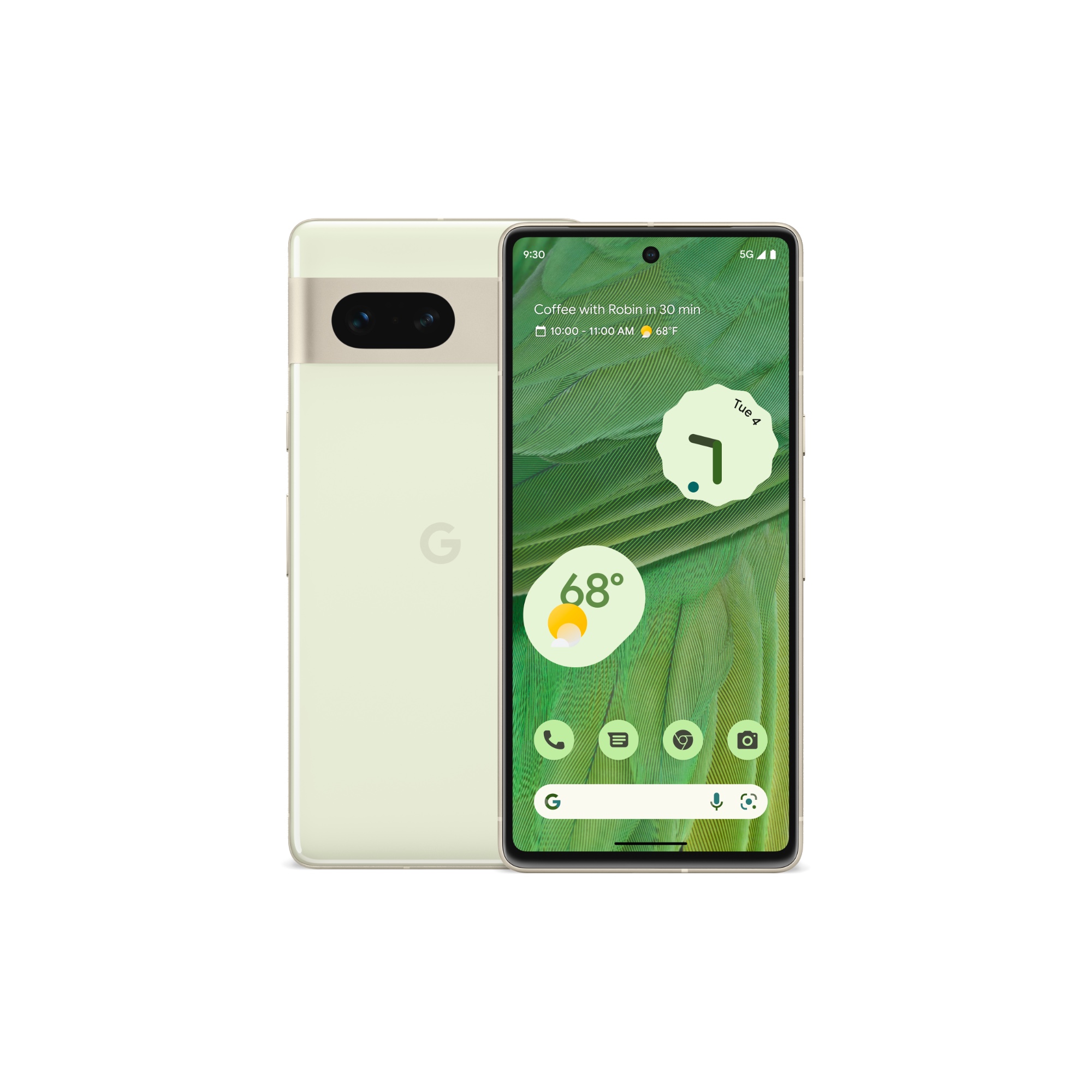
The value king
It might look the same as its predecessor, but the Pixel 7 still offers one of the best values on the market. From its incredible cameras to the latest updates, all for an affordable price, Google has another winner on its hands.
Pros
- 90Hz refresh rate
- Faster charging
- Much-more affordable
- 50MP primary wide-angle camera
- Face unlock and under-display fingerprint scanner
Cons
- Only two storage options
- Heavier

Nothing special
All of Apple's "fun and exciting" changes landed with its Pro and Pro Max devices. The iPhone 14 is still great, but just don't expect anything ground-breaking, and make sure your wallet is prepared.
Pros
- Apple's processors are more efficient
- Available with up to 512GB of storage
- Smaller design is more comfortable for some
- Longer software support
Cons
- eSIM-only
- $200 more expensive
- Much smaller battery
- Limited to 20W charging speeds
It's been a few weeks since Apple unveiled its latest devices, the iPhone 14 series, and now Google is here with the Pixel 7. But this year, things are a bit different when it comes to seeing how the Pixel 7 vs. iPhone 14 stack up against one another. Over the past year, the Pixel 6 has been largely considered to offer one of the best values on the market, while Apple continued to sell the iPhone 13 in droves. Let's dive a bit deeper to see what both of these tech giants have to offer the masses in late 2022.
Google Pixel 7 vs. iPhone 14: Design
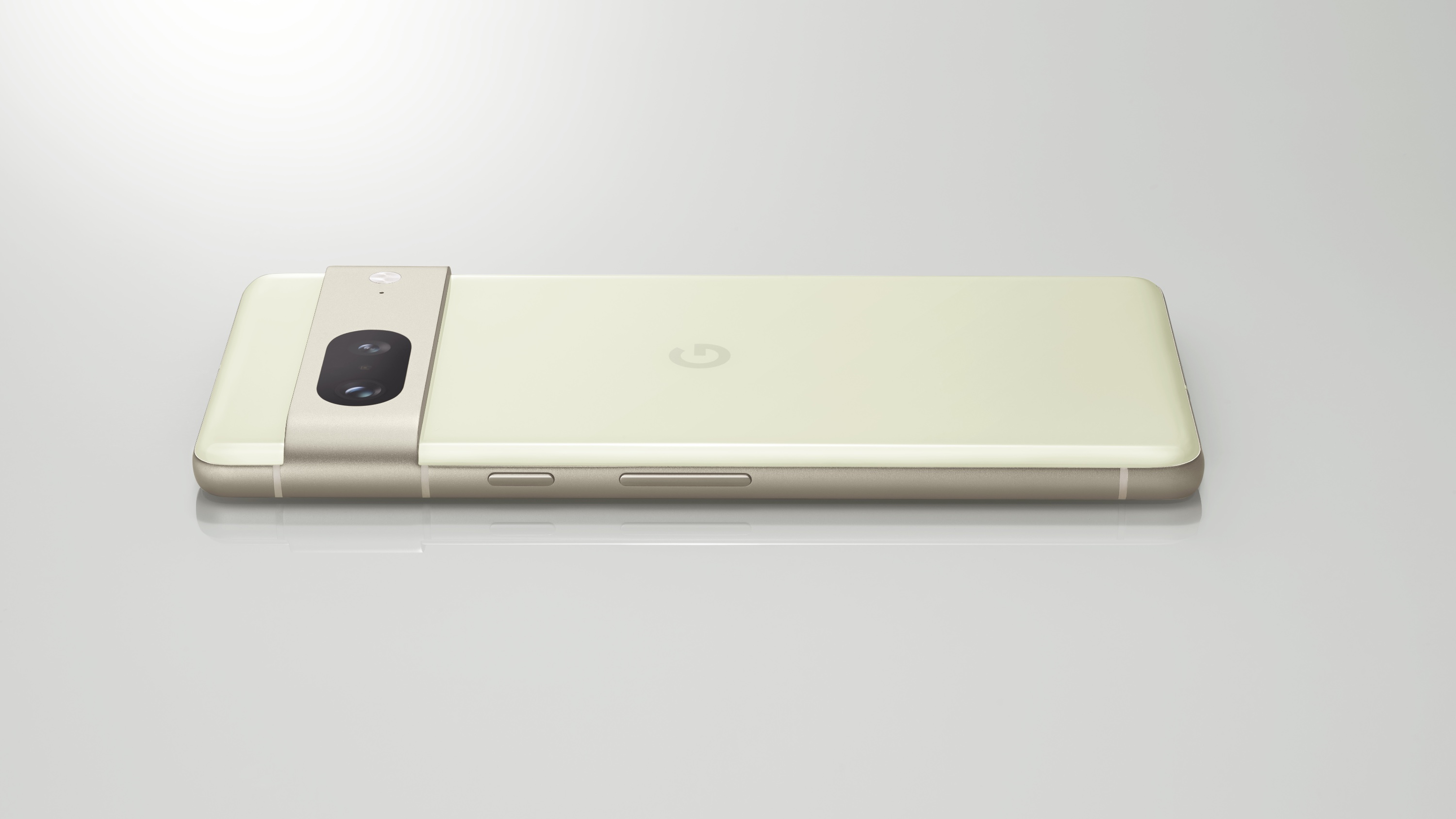
Getting this out of the way first, there are no significant design changes when it comes to either the Pixel 7 or the iPhone 14. Google already drastically redesigned its hardware in 2021 with the Pixel 6 and its cyborg-like camera bar. This returns with the Pixel 7, but with a slight tweak as Google has replaced the glass across the entire bar in favor of a matte aluminum finish.
This matte aluminum finish also comes to the phone's frame, while you're greeted with glass on the front and back. It seems Google might have had a bit of inspiration from Apple, as this is the same combination that you'll find on the iPhone 14. This includes a matte finish on the aluminum frame along with a glossy finish on the display and the back glass.
All of the buttons for both devices remain the same, with the only other difference coming in the form of the removal of the SIM card slot on the iPhone 14. Apple is the first phone maker to release a phone in any region sans the SIM card, forcing its users (and carriers) to rely on eSIM. Meanwhile, the Pixel 7 offers Dual SIM functionality with a physical Nano SIM card slot and eSIM support built into the software.
Google Pixel 7 vs. iPhone 14: Hardware

The similarities pretty much stop here, as the Pixel 7 features a larger 6.3-inch OLED display compared to the iPhone 14's 6.1-inch OLED screen. As you might have expected, the Pixel 7 retains an edge over the iPhone with its 90Hz Smooth Display. Apple finally brought faster refresh rates to the iPhone 13 Pro and iPhone 13 Pro Max last year but didn't bring over the ProMotion technology to the iPhone 14 or iPhone 14 Plus.
Under the hood, things get even more interesting, as the Pixel 7 is powered by the Tensor G2 chip, which is built on a 4nm process still using the same cores as its predecessor. However, Google has made a few tweaks and changes to provide up to 20% better performance, but more importantly, the G2 is expected to be 20% more power efficient. One upgrade that Google has made was in the GPU, as this could provide up to 35% boosts to Machine Learning performance, something that Google leans heavily on with the Pixel's software.
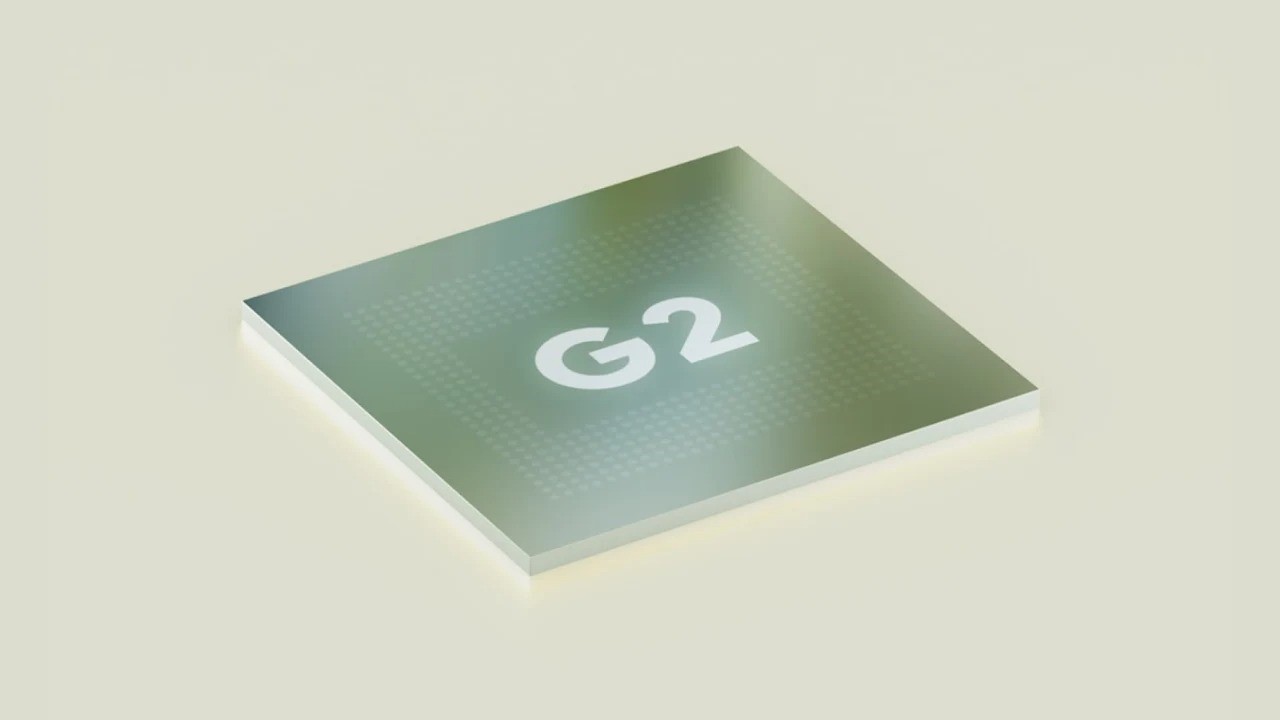
Paired with Google's Tensor G2 chip will be 8GB of RAM on the base Pixel 7, while being available with either 128GB or 256GB of storage. It shouldn't come as a surprise, but those hoping for a hail-mary addition of a microSD card will have to keep their fingers crossed for another year.
Get the latest news from Android Central, your trusted companion in the world of Android
| Category | Google Pixel 7 | iPhone 14 |
|---|---|---|
| Operating system | Android 13 | iOS 16 |
| Display | 6.3-inch OLED | 2400x1080 (416ppi) | Up to 90Hz refresh rate | Up to 1,400 nits (peak) | 6.1-inch OLED | 2532x1170 (460ppi) | 60Hz refresh rate | Up to 1,200 nits |
| Chipset | Google Tensor G2 | A15 Bionic |
| RAM | 8GB | 6GB |
| Storage | 128GB / 256GB | 128GB / 256GB / 512GB |
| MicroSD slot | ❌ | ❌ |
| Rear camera 1 | 50MP, f/1.85, 1.2um, LDAF, Super Res Zoom (up to 8x) | 12MP, f/1.5, 1.9um, OIS, PDAF, 4K at 60fps |
| Rear camera 2 | 12MP, f/2.2, 1.25um, 114-degree wide-angle | 12MP, f/1.8, 120-degree wide-angle |
| Front camera | 10.8MP, f/2.2, 1.22um, fixed focus, 4K at 60fp | 12MP, f/2.2, autofocus, 4K at 60fps |
| Connectivity | 5G mmWave, Wi-Fi 6E, Bluetooth 5.2, NFC, GPS, UWB, eSIM | 5G (sub-6, mmWave), Bluetooth 5.3, Wi-Fi 6, UWB |
| Audio | USB-C, stereo speakers | Lightning, stereo speakers |
| Battery | 4,355mAh | 3,279mAh |
| Charging | USB-C PD 3.0, 30W wired charging, 15W wireless charging | 27W wired charging, 15W MagSafe wireless charging |
| Water resistance | IP68 | IP68 |
| Security | In-display fingerprint (optical), Face Unlock | Face ID |
| Colors | Obsidian, Snow, Lemongrass | Midnight, Purple, Starlight, Product Red, Blue |
| Dimensions | 155.6 x 73.2 x 8.7mm, 197g | 146.7 x 71.5 x 7.8mm, 172g |
As for the iPhone 14, not only is this the first iPhone to go eSIM-only, but it's also the first time that we've seen Apple reuse a processor in a new flagship phone. The iPhone 14 and iPhone 14 Plus are both powered by the same Apple A15 Bionic that was introduced with the iPhone 13 Pro and iPhone 13 Pro Max.
The only differentiating factor between the iPhone 14 and iPhone 13 is that the former now has a Penta-core GPU compared to the quad-core GPU of the latter. According to Apple, this will provide about a 20% boost in graphics performance without losing out on any of the performance offered by the 6-core CPU.
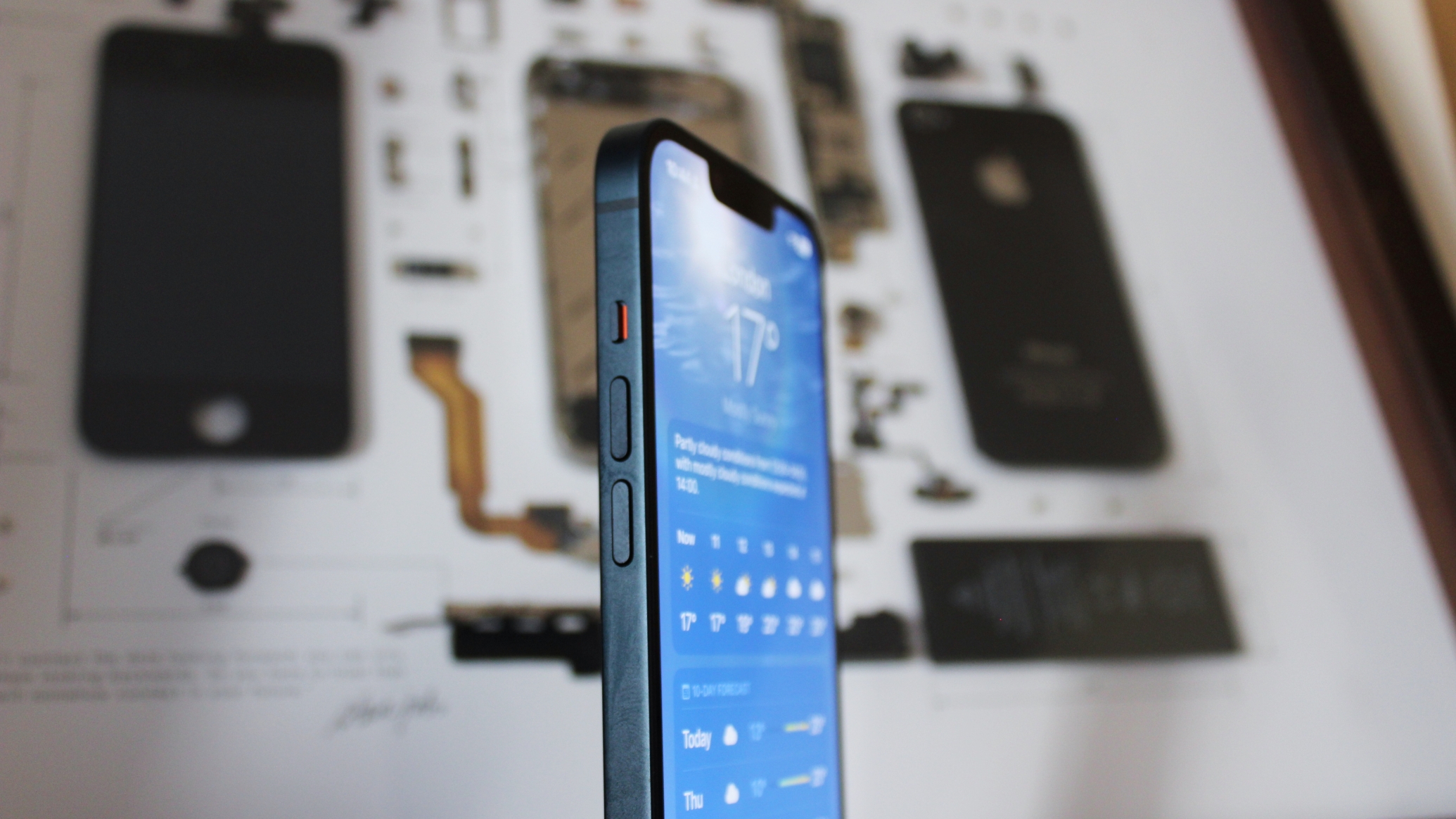
With the iPhone 14 being available, we've since learned that Apple also increased the amount of RAM to a total of 6GB. This still falls short of the 8GB of the Pixel 7, but the iPhone 14 has the added benefit of being available with up to 512GB of storage.
The trials and tribulations that Pixel 6 owners experienced when it came to the under-display fingerprint scanner are well-documented. But the Pixel 7 might have an ace up its sleeve if your scanner is being uncooperative, as Google is bringing back Face Unlock with its 2022 flagship lineup. However, instead of removing one feature in favor of another, the Pixel 7 includes both forms of biometrics, compared to being left with just one.
While Apple fans have been hoping to see the return of Touch ID with a modern (read: non-iPhone SE) iPhone, it just isn't in the cards. There are rumors that Apple is planning to implement an under-display fingerprint scanner in a future iPhone release, but it did not come to the iPhone 14. Instead, you'll need to rely on Face ID for biometrics, which includes everything from unlocking your phone to using Apple Pay for mobile payments.
Google Pixel 7 vs. iPhone 14: Battery and charging
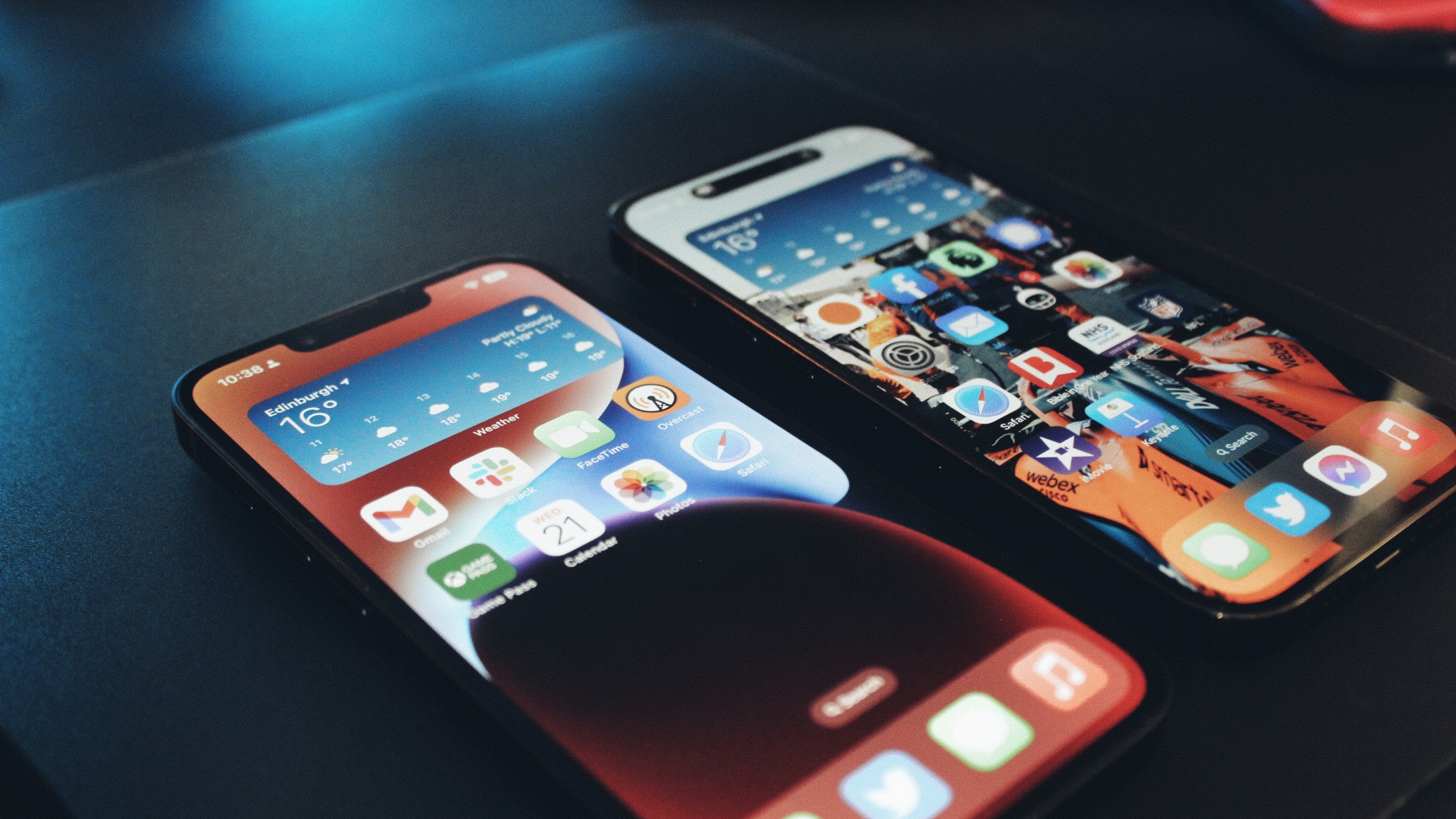
Battery life on smartphones is one of the most subjective comparisons to make, and it's amplified when comparing Android phones to iPhones. We'll have to put Google's claimed "all-day battery life" to the test, as the Pixel 7 is rated for lasting up to 24 hours on a single charge. The phone itself is equipped with a 4,355mAh battery, so we're hoping the Tensor G2's efficiency improvements correlate to better battery life.
On the Apple side of things, the iPhone 14 is said to last for up to 20 hours when being used for "video playback." This isn't too shabby considering that Apple is using a comically-small 3,279mAh battery, even smaller than what the Galaxy Z Flip 4 has. But again, there are a plethora of other factors that go into battery life, and Apple's A-Bionic chips are well-known for being incredibly efficient.
Both of these phones offer wireless charging support, with the iPhone 14 being capable of reaching up to 15W charging speed when using MagSafe. When using a traditional wireless charger, these speeds drop down to 7.5W. And as for wired charging, the iPhone supports 20W "fast charging," capable of reaching 50% in just 30 minutes of charging when using at least a 20W adapter.
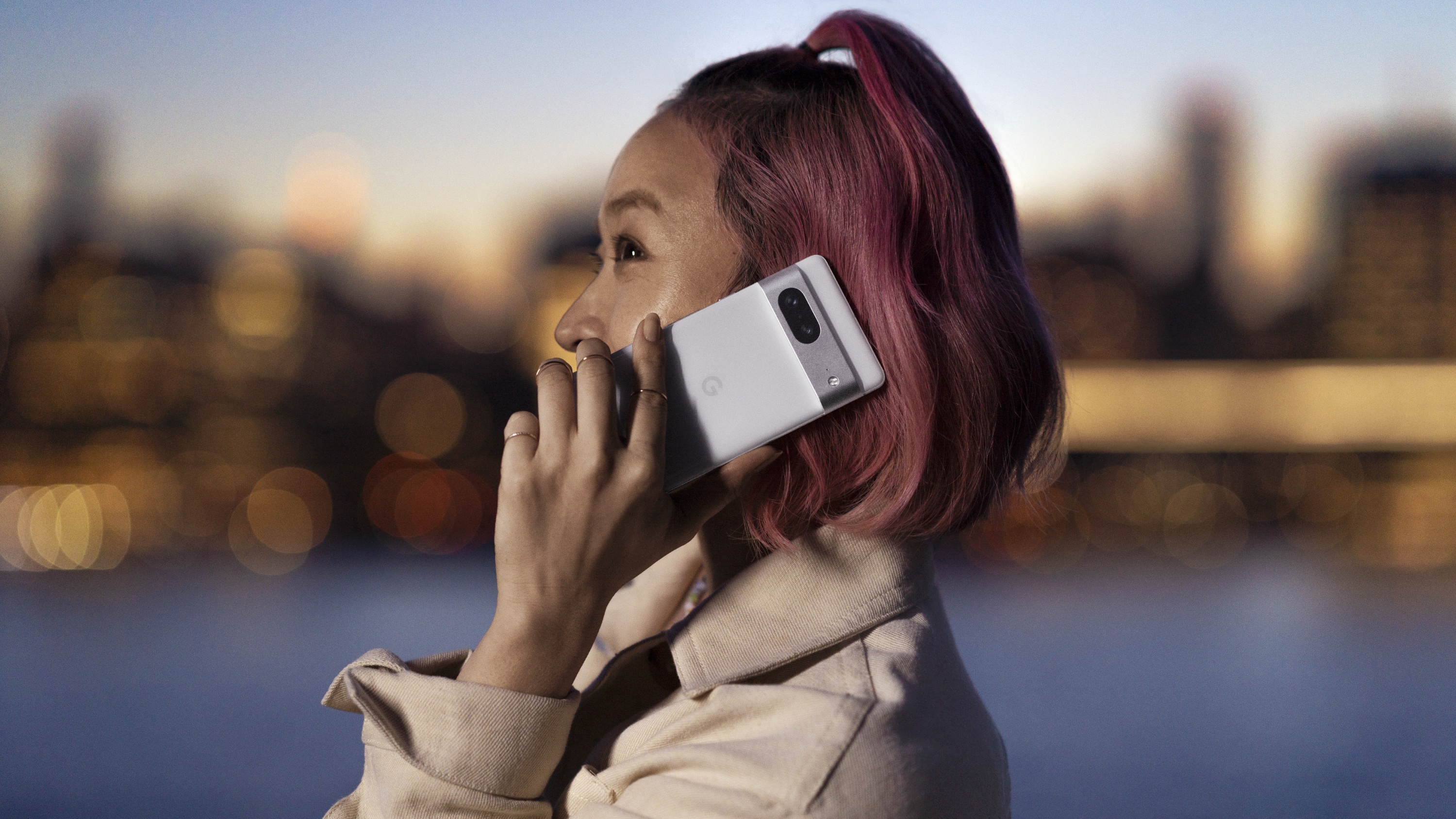
With the Pixel 7, wireless charging speeds also vary depending on what you are using to charge your device. If you own (or pick up) Google's Pixel Stand v2, the Pixel 7 will be able to reach up to 21W while also dropping down to the standard 7.5W speeds with other Qi chargers. Google has also implemented fast wired charging, with the ability to achieve a 50% charge in "about" 30 minutes. But you'll need to make sure that you are using a USB-PD 3.0 (PPS) charging brick in order to fast charge your Pixel 7.
And just something to point out, neither the iPhone 14 nor the Pixel 7 include a charging brick in the box. You'll only find a charging cable and will need to pick up a compatible wall charger on your own.
Google Pixel 7 vs. iPhone 14: Cameras
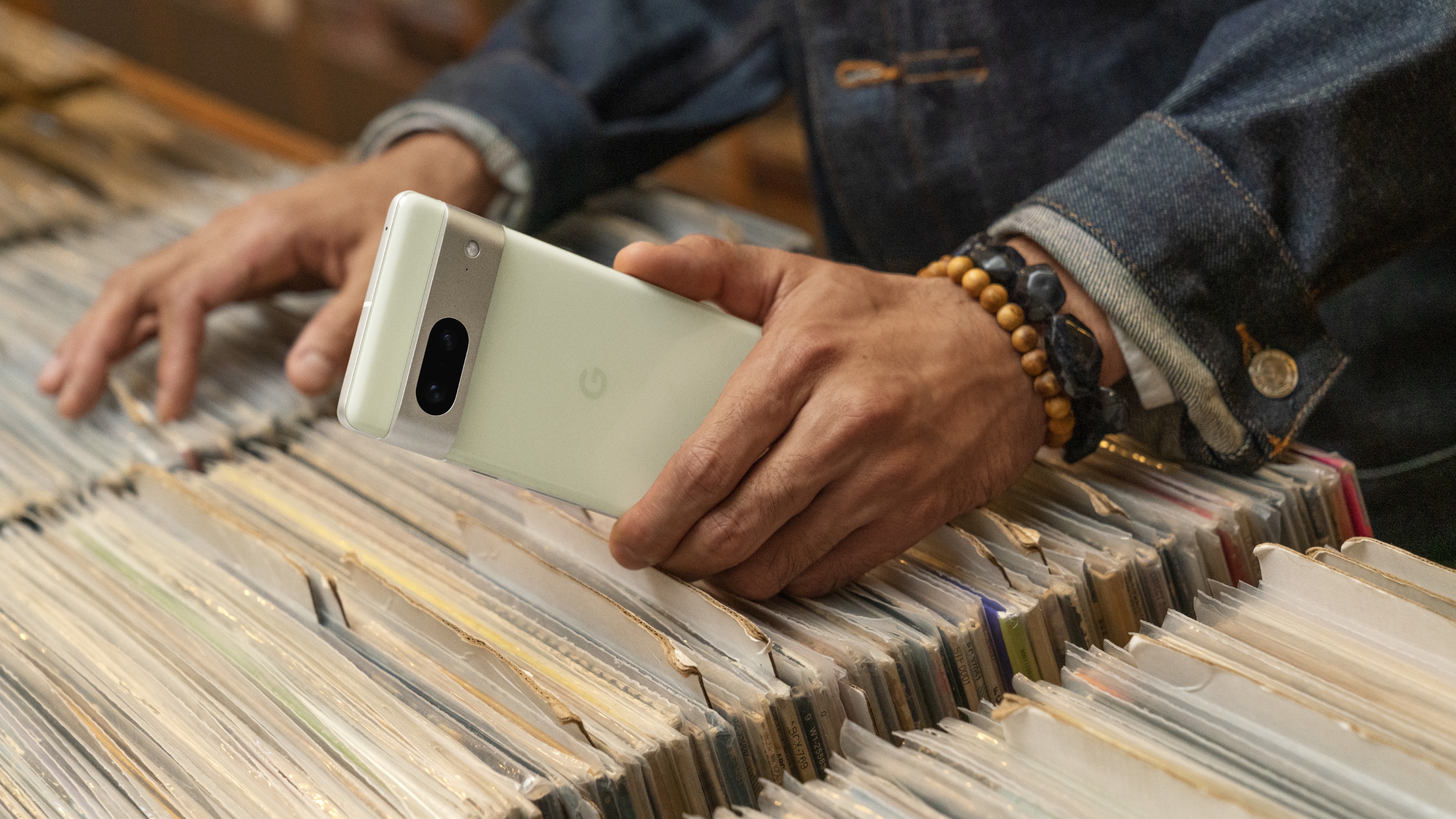
Moving onto the cameras, both Apple and Google are sticking with dual-camera setups for the Pixel 7 and iPhone 14. Both devices feature a primary wide-angle lens paired with an ultrawide sensor. But, on paper at least, the Pixel 7 looks as though it will obliterate the iPhone 14 despite Google using the same 50MP primary camera from last year's Pixel 6 and Pixel 6 Pro.
It's well-documented that Google relies heavily on machine learning and on-device processing to work its camera magic in Pixel phones. And this trend looks to continue with the Pixel 7 and Pixel 7 Pro. Paired with the 50MP primary lens is a 12MP ultrawide camera with a 114-degree FoV, which is quite serviceable, even if you have to do a little bit of extra editing work after snapping your pictures.
Google's excellent Night Sight feature returns to the Pixel 7 family, providing some of the best pictures that you can take on a smartphone. And all of the other excellent software features, such as Magic Eraser, Photo Unblur, and Motion Mode, are available on the Pixel 7. To help bring some excitement to the camera department, Google has made a couple of additions, as Cinematic Blur will make you feel like a professional videographer capable of taking "Hollywood-like videos." Real Tone, first introduced with the Pixel 6 and designed to "accurately portray all skin tones in their natural beauty," is now available when using Night Side and Portrait Mode on the Pixel 7.

As we noted previously, the "paper specs" of the Pixel 7 look as though they would trounce whatever Apple offers on the iPhone 14. However, it's well-documented that iPhones are always amongst the best camera smartphones, even the non-Pro models. This remains true with the iPhone 14 despite using a 12MP wide-angle lens and a 12MP ultrawide camera combination.
Apple's image processing is widely considered to be right behind Google's Pixel while also providing consistent photos. The iPhone 14's camera system is the same one that was found in the iPhone 13 Pro series, which has been at the top of many "best of" lists for the past year.
Much like Google, Apple also didn't just slap in some new cameras and call it a day. There are a few other camera features that might appeal to users, as the new "Action mode" greatly reduces the amount of shakiness in videos. You might even find that you are looking for ways to test out this fun videography mode. The iPhone 14 also has the added benefit of being able to record in Dolby Vision HDR, something that you won't find on any other smartphone.
Google Pixel 7 vs. iPhone 14: Conclusion
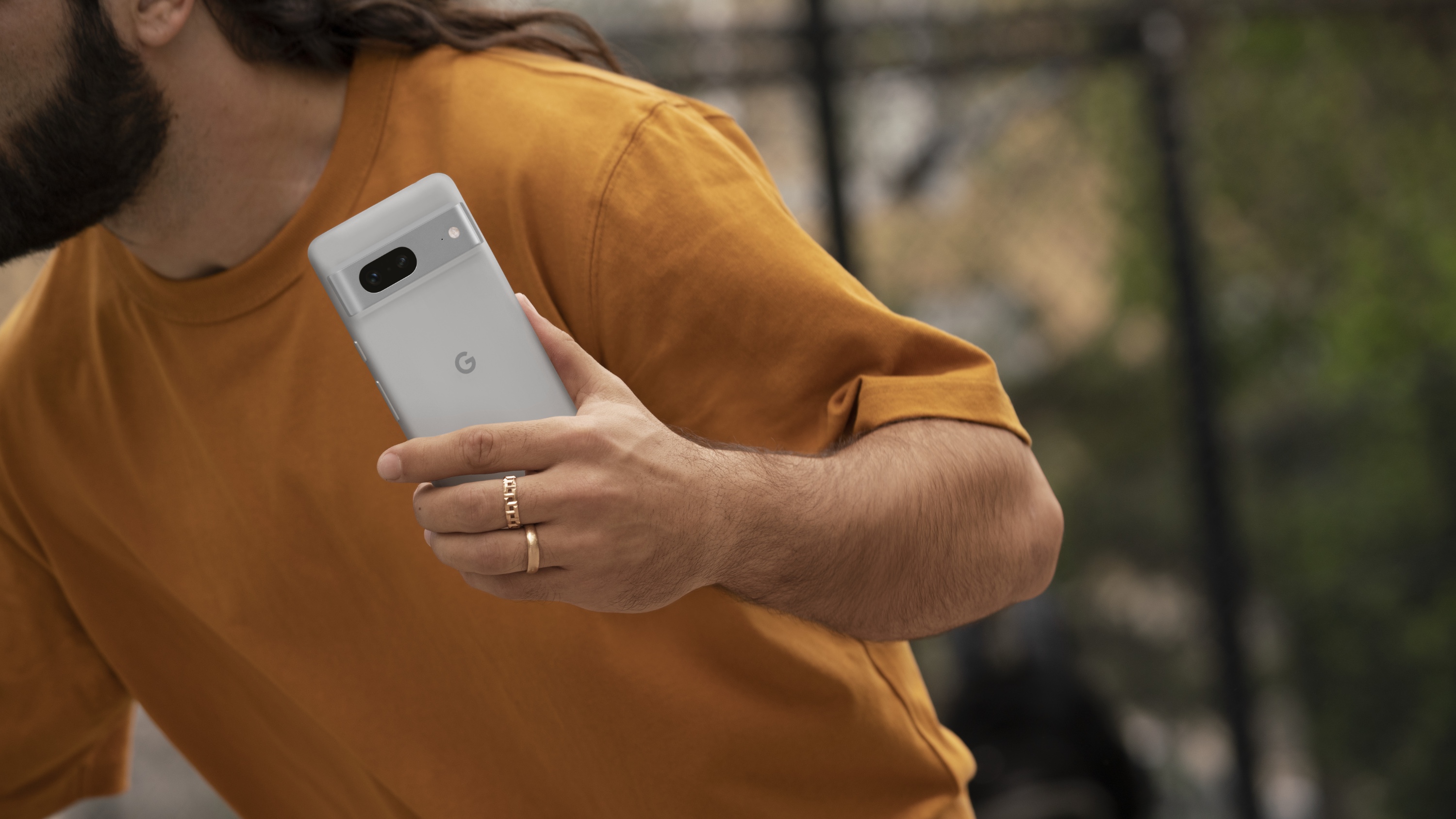
Without paying attention to price, it would be a really tough call to make if you're trying to decide between the Pixel 7 vs. iPhone 14. Both of these phones are really the "go-to" choices for those who want an excellent mobile experience.
The iPhone 14 is smaller, lighter, and more comfortable to hold, even with its hard edges and flat glass on the front and back. Apple's prowess in the processing power department is arguably the best in a smartphone. And the camera might not seem like an improvement, but Apple's decision to re-use specs is good for the industry, and this system still holds up quite well in 2022.
On the other hand, Google's drastic design change already happened with the Pixel 6, as the Pixel 7 represents more of an iterative update. The display itself is larger, for better or worse, but also includes a faster refresh rate without making any major sacrifices.
We'll have to reserve judgment about the performance until we get our hands on the Pixel with the all-new Tensor G2 chip. But if Google comes close to its claimed performance and battery gains, this will go a long way to improving one of the best phones on the market.
Alas, we can't ignore the price, and with the Pixel 7 coming in at $200 less than the iPhone 14, it's not much of a competition. Even if you have to deal with less-than-stellar battery life, the combination of an incredible camera system paired with the much-lower price tag is just too good to pass on. The iPhone 14 is no slouch, but it just can't hang with what Google has done with its Pixel line.

Looking pretty great
The Pixel 7 has just about everything you could want from an entry-level flagship, plus a few extra features that you won't find elsewhere.

If you're okay with iOS, and you have a few extra dollars to spend, the iPhone 14 is a fine everyday device. But you'll want to look elsewhere if you need something exciting.

Andrew Myrick is a Senior Editor at Android Central. He enjoys everything to do with technology, including tablets, smartphones, and everything in between. Perhaps his favorite past-time is collecting different headphones, even if they all end up in the same drawer.
